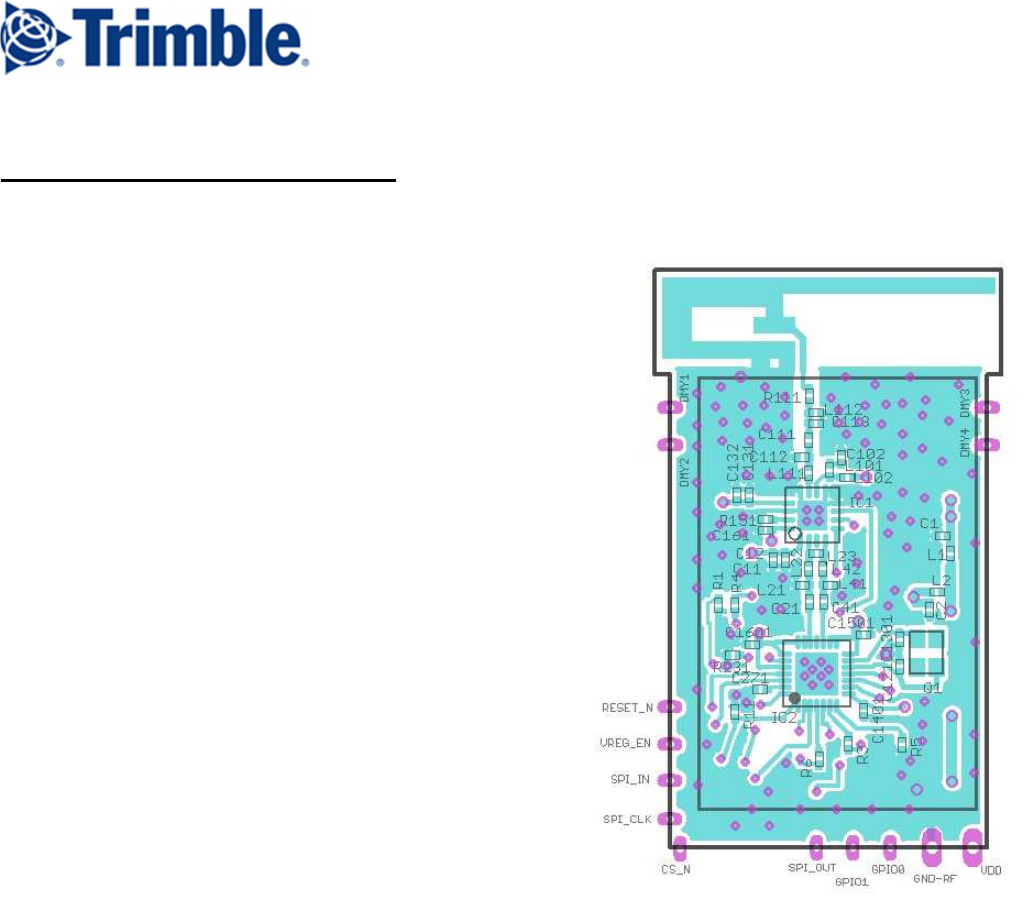Trimble TK42RF TI RF AMP Module User Manual TI RF AMP integration manual 01
Trimble Inc. TI RF AMP Module TI RF AMP integration manual 01
Trimble >
user manual

TI RF AMP Module Integration Manual
This module will be built in only in Trimble products by Trimble itself. Trimble makes sure that the
maximum voltage is 3.8V.
The design is based on the CC2520 from Texas Instruments.
• VDD: supply voltage 1.8 - 3.8V
• GND
• SPI_OUT: SPI Interface Serial Out
• SPI_IN: SPI Interface Serial In
• SPI_CLK: SPI Interface Serial clock 8MHz max
• CS_N: SPI Interface Chip select active low
• RESET_N: External Reset pin active low
• VREG_EN: when High, digital voltage regulator is active
• GPIO0: general purpose digital I/O
• GPIO1: general purpose digital I/O
Mounting instruction:
The module could be mounted and connected like a SMD_component.
Maximum Voltage: 3,8V
Connect the SPI Port to a microcontroller and use the instruction of Texas Instruments to start
running the module.
ID´s:
FCC: PWR-TK42RF
IC: 4131A-TK42RF
Units with this module have to mark on the label with:
Contains FCC ID: PWR-TK42RF
Contains IC: 4131A-TK42RF

Statements:
Changes or modifications not expressly approved by the party responsible for compliance could void
the user's authority to operate the equipment.
This device complies with Part 15 of the FCC Rules. Operation is subject to the following two
conditions:
(1) This device may not cause harmful interference, and
(2) This device must accept any interference received, including interference that may cause
undesired operation.
This device complies with Industry Canada licence-exempt RSS standard(s). Operation is subject to
the following two conditions:
(1) this device may not cause interference, and
(2) this device must accept any interference, including interference that may cause undesired
operation of the device
Le présent appareil est conforme aux CNR d´Industrie Canada applicables aux appareils radio
exempts de licence. L´exploitation est autorisée aux deux conditions suivantes:
(1) l´appareil ne doit pas produire de brouillage, et
(2) l´utilisateur de l´appareil doit accepter tout brouillage radioélectrique subi, même si le
brouillage est susceptible d´en compromettre le fonctionnement.